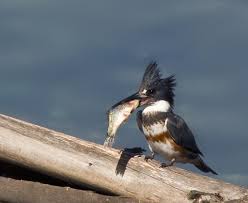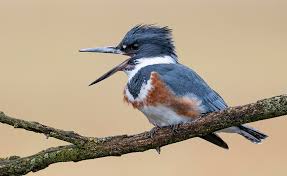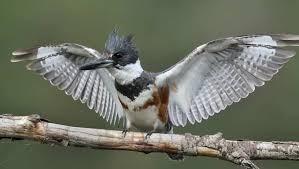by DJ Featherton

Wherever there is water, there will be a Belted Kingfisher. It doesn’t matter if it’s ocean shores, rivers edge, lakeside, or even well-stocked private koi or trout ponds, the Belted Kingfisher will be there. There are some 90 to 120 Kingfisher species in all areas of the world, except for the polar regions and the driest of deserts. Technically, there are three species of Kingfishers in the U.S., but two are only seen along the Texas border and slightly into Arizona. These are the small, Green Kingfisher and the crow-sized, Ringed Kingfisher. Otherwise, it’s the Belted Kingfisher that is common across all of North America.

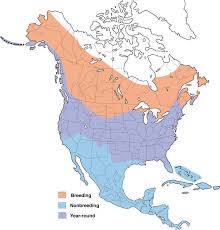

Although common, the Belted Kingfisher commands attention. They are no bigger than a robin. They are stocky, have a square tail, short legs, and stubby wings. To top this off, they have a long and straight pointed bill, and a big head with a high and shaggy crest that looks like a punk rocker redo. Their rapid wing beat gives them a straight-line, speedy flight as they busily patrol their territory with a loud and constant chatter. These birds are not shy about being seen or heard. Belted Kingfishers are a blue-gray on top with white underparts and a blue-gray belt around their necks. Kinda like a punk rocker! The female is the same with an added broad, rusty-colored band on her belly. All in all, their look is quite distinctive, and their loud and busy behavior draws attention.

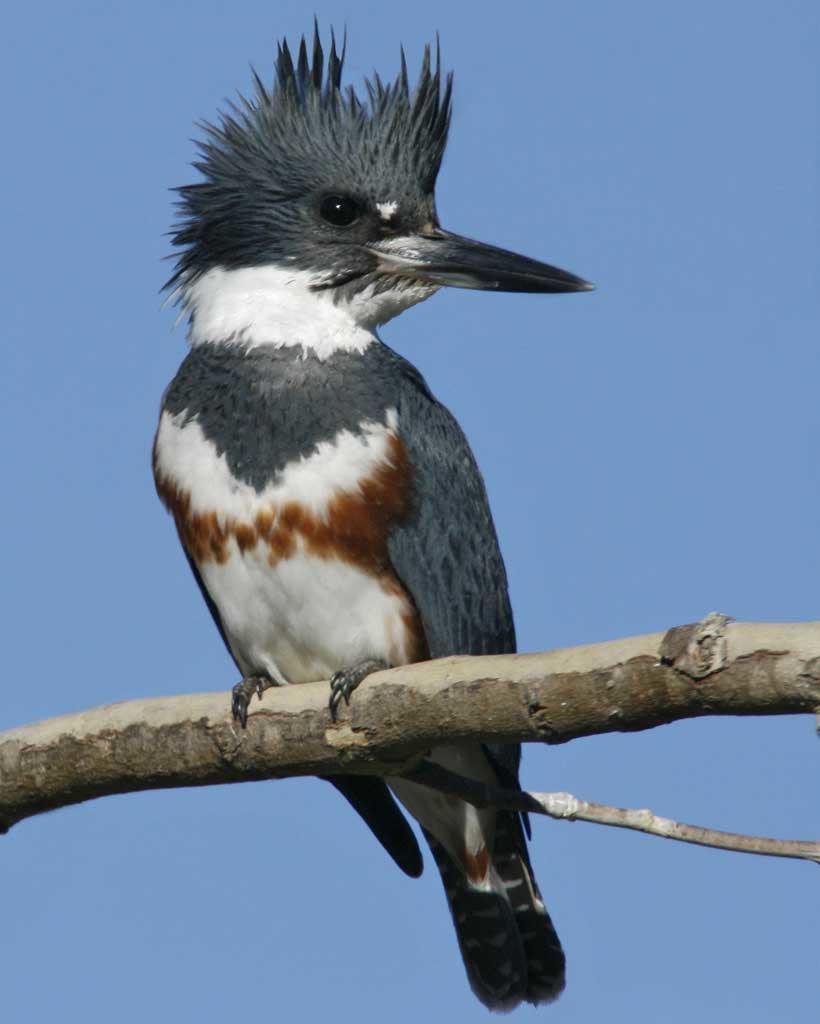
Coming to a sudden stop, they hover over the water, and dive straight down with eyes shut to snatch small fish, frogs and crawdads. Interestingly, as important as food availability is, finding the right place to build their nest comes first. The Belted Kingfisher needs just the right sandy, open-bank with no roots or vegetation to burrow a deep tunnel into. This tunnel is slanted upwards to prevent rainwater from entering, and is commonly three to six feet long, although some can reach up to 15 feet. At the end of the tunnel is a burrowed out cavity big enough to nest and raise their brood. All this digging and burrowing is done with their front claws and long and powerful beak. House keeping is not the best as fish bones, crawdad parts and pellets are regurgitated. This collection of debris seems to help insulate the nest during cold weather. Maybe their deep nests are important to hide in after a busy day of protecting their fishing hole. I’m sure an aggravated Great Horned Owl wouldn’t miss his opportunity if he caught the Kingfisher doing some night-fishing.
Well, if there’s any bird in our environment that thinks he’s bigger than his britches, it’s the self-important, bossy and busy, Belted Kingfisher. In truth, however, these delightful birds are very distinctive and entertaining. Even well-seasoned birders will stop a conversation to say, “Hey, I hear a Kingfisher!” The busy, Belted Kingfisher is sure to capture our attention. Enjoy! I’ll see ya out there!

